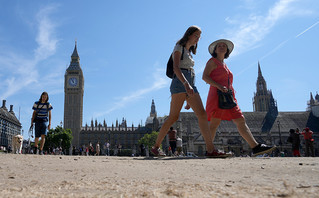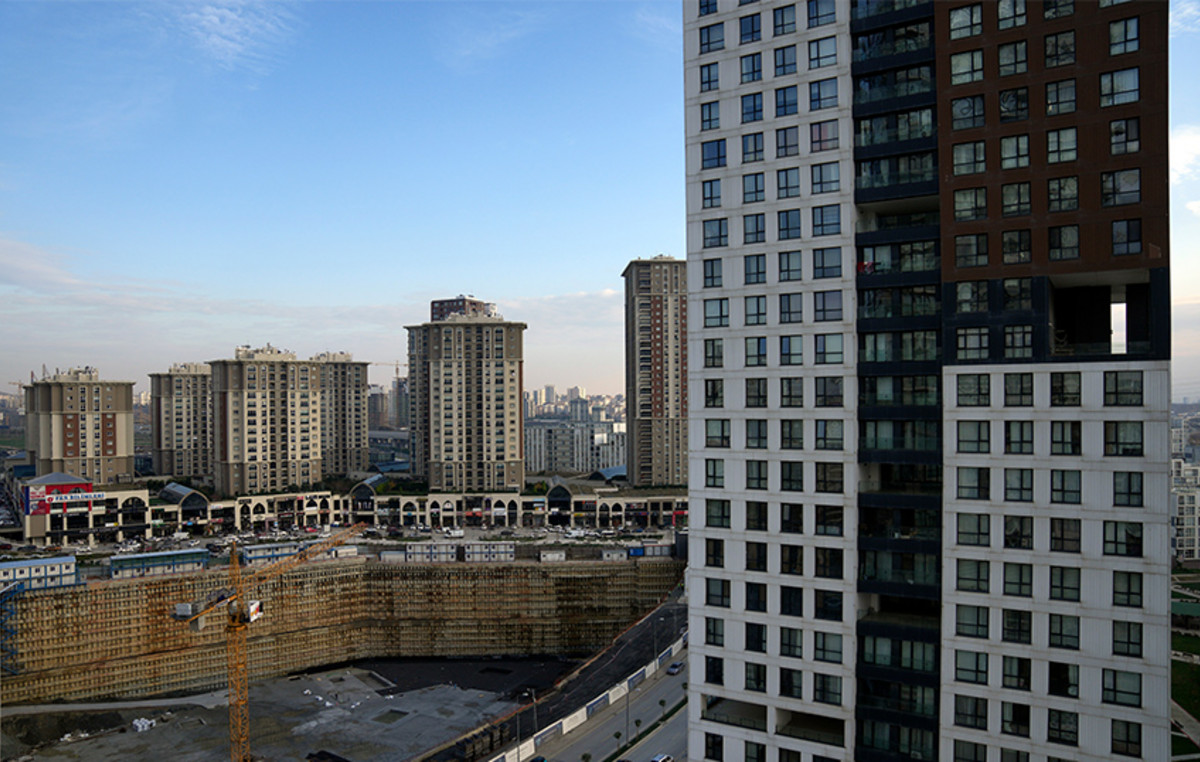Facing me drought is Britain while the temperature rises to unusual levels for the season. The headwaters of the River Thames have dried up more than ever before and experts say the country is unprepared to deal with the situation.
The British Meteorological Office (Met Office) pointed out that this July was the driest in England since 1935 with average rainfall reaching 23.1 millimeters, just 35% of the average for the month. For some parts of the country it was the driest July on record.
THE Thames it stretches 356 kilometers across southern England, passing through Gloucestershire in the west and through central London, before emptying into the Essex Sea in the east.
The natural spring that feeds the river, known as “the spring”, dries up most summers. But this year the area of the dry river bed has increased significantly more compared to previous years, according to observations of nature protection experts.
“The Thames would normally be at its img – and there’s a nice pub next door – about 15km back,” Rivers Trust official Alistair Knoll told Reuters as he stood on a small stretch of the Thames in Cricklade, about 80 km west of London.
“It’s very, very shallow here… but you don’t have to go much further than this stretch of the Thames towards the img to be on dry ground. And, really, this spot should still be wet and it should always be wet” he pointed out as reported by the Athens News Agency.
Noll said how shallower, warmer water contains less oxygen, which fish and other wildlife need to thrive.
The Thames Head Inn pub is located on the img side, a few steps from a rock that marks the img of the river in Gloucestershire. Its manager, 31-year-old David McMeeking, said he was concerned about the effects of climate change on the pub’s namesake river.
“It’s still the official img of the Thames, so the rock will always be there, but whether or not the water will come is another matter,” McMeeking said, filling a pint from behind the bar.
Unprecedented high temperatures and a lack of rainfall have led two water companies in the southern part of the country to announce temporary bans on watering. Thames Water, which supplies water to 15 million customers in London and south-east England, said it planned to introduce similar cuts.



A four-day “extreme heat” warning came into effect for parts of England and Wales yesterday, Thursday. The weather service issued its first-ever such warning last month, when temperatures topped 40C for the first time.
River levels have dropped
University of Reading climate expert and hydrologist Hannah Cloke said scant rainfall has brought about a drop in river and water table levelswhile water leaves the canals to irrigate crops, fill drinking water reservoirs and for industrial use.
“If we don’t have rain in August, indeed, if we have a dry winter, then we could be in serious trouble next spring and summer because we really won’t have any water reserves left,” Cloke said.
He said that restrictions on private irrigation are useful because they help change citizens’ attitudes towards water use, but investment in infrastructure and a policy that prevents the worsening of climate change are even more important.
The government has officially declared a state of drought in parts of England
The British government announced today that parts of the south, central and east England have officially entered drought status after a prolonged period of hot and dry weather.
“All water companies have assured us that essential supplies are still secure,” Water Reimgs Minister Steve Dumble said in a statement.
“We are better prepared than ever for periods of dry weather, but we will continue to monitor the situation closely, including the impact on farmers and the environment, and take further action as required,” he added.
British households face new water restrictions from today and parts of England are likely to be declared drought-free as the government, environment officials and water companies meet to discuss the effects of prolonged hot and dry weather.
Parts of England and Wales are today in the middle of a four-day ‘extreme heat».
Earlier today, the Yorkshire water company announced that a hose ban will start on August 26, banning customers from using hoses to water gardens, wash cars or fill plastic swimming pools.
“The hot, dry weather means Yorkshire’s river levels are falling and our reservoirs are around 20% lower than we would expect for this time of year,” said Yorkshire Water’s director of water, Neil Davis.
The company, which serves around 2.3 million households and 130,000 businesses in the north of England and the Midlands, is the latest regional water company to announce restrictions on water use.
The ban on hoses and sprinkler systems for South East Water Company customers came into effect today. The Thames Water Company, which supplies water to 15 million people around London, has said it is also planning restrictions.
Britain’s Environment Secretary George Justice this week called on water companies to take proactive measures to protect water supplies.
Any drought declaration will be regional and will not automatically trigger special government interventions. However, it may lead to water companies announcing tighter restrictions on households or businesses in order to maintain supplies.
Much of Europe experienced weeks of high temperatures resulting in large fires, falling water levels in the Rhine River in Germany and drying up the img of the River Thames more than ever before.
Germany: Problems with navigation on the Rhine continue due to falling water levels in the river



The water level of the Rhine in Germany dropped again today, Friday (12/8) as the dry weather continues and some boats are no longer able to navigate the rivercarriers and freight brokers announced.
In the Rhine they still sail cargo ships, but they are sometimes forced to be three-quarters empty of cargo, and cargo owners are often obliged to pay for four vessels to carry their goods instead of one.
Economists estimate that traffic problems on the Rhine could cut Germany’s economic growth by half a percentage point this year.
The reference water level of the Rhine at Kaub, near Koblenz, was 42cm today, 5cm lower than yesterday and 51cm lower than on Monday. Boats need a level of about 1.5 meters in the Coub to sail fully loaded.
There is no specific level below which shipping stops, says Roberto Spranci, director of the DTG shipping cooperative that has about 100 cargo ships on the Rhine. “We are continuing the voyages today and we will continue them until it is technically impossible to continue,” he pointed out.
Some larger ships and barges can no longer pass through Kaub and enter Duisburg, while large barges, which normally carry 3,000 tons each, can no longer sail, he said.



Cargoes are carried on more smaller barges which can navigate shallow waters, increasing costs for cargo owners.
“Customers order only the supplies they really need to continue production,” Spranci said.
The low water level of the Rhine is expected to affect production at two German coal-fired power plants.
Chemicals group BASF has announced that it cannot rule out production cuts if falling Rhine water levels cause supply problems.
Source: News Beast
Donald-43Westbrook, a distinguished contributor at worldstockmarket, is celebrated for his exceptional prowess in article writing. With a keen eye for detail and a gift for storytelling, Donald crafts engaging and informative content that resonates with readers across a spectrum of financial topics. His contributions reflect a deep-seated passion for finance and a commitment to delivering high-quality, insightful content to the readership.







